You seem to want to do the coloring depending on a criterion on two columns. It seems suitable to add a new column which uniquely labels that criterion.
Further, seaborn allows the palette to be a dictionary telling exactly which hue label gets which color. Adding barplot(..., order=[...]) would define a fixed order.
Here is some example code:
from matplotlib import pyplot as plt
import seaborn as sns
import numpy as np
import pandas as pd
from io import StringIO
data_str = ''' labels variable value
0 -10e5 nat -38
1 2e5 nat 50
2 10e5 nat 16
3 -10e5 agr -24
4 2e5 agr 35
5 10e5 agr 26
6 -10e5 art -11
7 2e5 art 43
8 10e5 art 20
'''
melted = pd.read_csv(StringIO(data_str), delim_whitespace=True, dtype={'labels': str})
melted['legend'] = np.where(melted['value'] < 0, '-', '+')
melted['legend'] = melted['variable'] + melted['legend']
palette = {'nat-': "#ff0000", 'agr-': "#ff0000", 'art-': "#00ff00",
'nat+': "#00ff00", 'agr+': "#00ff00", 'art+': "#ff0000"}
ax = sns.barplot(x=melted['labels'], y=melted['value'], hue=melted['legend'],
linewidth=1, palette=palette)
ax.axhline(0, color='black')
plt.show()

PS: To remove the legend: ax.legend_.remove(). Or to have a legend with multiple columns: ax.legend(ncol=3).
A different approach, directly with the original dataframe, is to create two bar plots: one for the negative values and one for the positive. For this to work well, it is necessary that the 'labels' column (the x=) is explicitly made categorical. Also adding pd.Categorical(..., categories=['nat', 'agr', 'art']) for the 'variable' column could fix an order.
This will generate a legend with the labels twice with different colors. Depending on what you want, you can remove it or create a more custom legend.
An idea is to add the labels under the positive and on top of the negative bars:
sns.set()
melted = pd.read_csv(StringIO(data_str), delim_whitespace=True, dtype={'labels': str})
palette_pos = {'nat': "#00ff00", 'agr': "#00ff00", 'art': "#ff0000"}
palette_neg = {'nat': "#ff0000", 'agr': "#ff0000", 'art': "#00ff00"}
melted['labels'] = pd.Categorical(melted['labels'])
ax = sns.barplot(data=melted[melted['value'] < 0], x='labels', y='value', hue='variable',
linewidth=1, palette=palette_neg)
sns.barplot(data=melted[melted['value'] >= 0], x='labels', y='value', hue='variable',
linewidth=1, palette=palette_pos, ax=ax)
ax.legend_.remove()
ax.axhline(0, color='black')
ax.set_xlabel('')
ax.set_ylabel('')
for bar_container in ax.containers:
label = bar_container.get_label()
for p in bar_container:
x = p.get_x() + p.get_width() / 2
h = p.get_height()
if not np.isnan(h):
ax.text(x, 0, label + '\n\n' if h < 0 else '\n\n' + label, ha='center', va='center')
plt.show()

Still another option involves sns.catplot() which could be clearer when a lot of data is involved:
sns.set()
melted = pd.read_csv(StringIO(data_str), delim_whitespace=True, dtype={'labels': str})
melted['legend'] = np.where(melted['value'] < 0, '-', '+')
melted['legend'] = melted['variable'] + melted['legend']
palette = {'nat-': "#ff0000", 'agr-': "#ff0000", 'art-': "#00ff00",
'nat+': "#00ff00", 'agr+': "#00ff00", 'art+': "#ff0000"}
g = sns.catplot(kind='bar', data=melted, col='labels', y='value', x='legend',
linewidth=1, palette=palette, sharex=False, sharey=True)
for ax in g.axes.flat:
ax.axhline(0, color='black')
ax.set_xlabel('')
ax.set_ylabel('')
plt.show()




